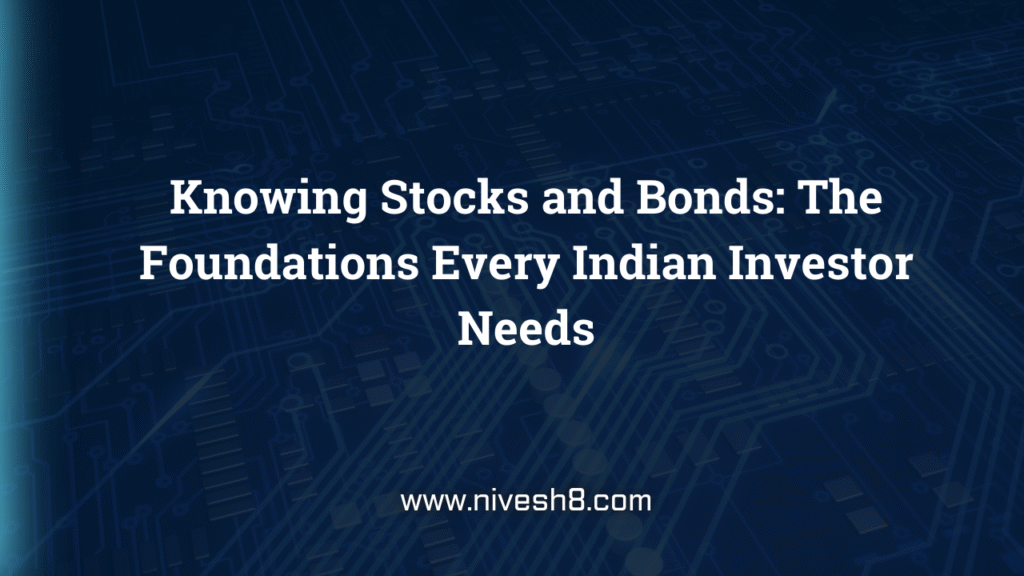Though most people hear about stocks and bonds when it comes to investing, not everyone is aware of the variations. Knowing how these two interact will enable you to create a robust and balanced portfolio if you are just beginning your financial roadmap. Let’s keep it basic and dissect what stocks and bonds are, how they operate, and how they could increase your wealth.
Describe stocks.
Stocks, then, are corporate ownership shares. Purchasing a stock amounts to a little portion of that firm. Should the business expand and turn a profit, you would gain two different ways:
- Capital gains: Should your stock price rise and you sell for more.
- Dividends: Certain businesses give their earnings to their owners in part.
Though it carries more risk, over the long run, investing in stocks might pay out more.
From what standpoint are bonds?
Bonds are loans you provide governments or businesses. They guarantee to pay you interest at regular intervals and reimburse your money at the end of a certain time in exchange. Bonds do not grant ownership, unlike stocks. Less hazardous, yet, they provide stability and guaranteed income, which helps.
Key Variations Between Bonds and Stocks
| Stock Features | Bonds |
| Ownership | Indeed, a section of a business |
| Returns | Capital increases, dividends |
| Risk Level | High risk level |
| Volatility | More turbulent |
| Time Horizon | Ideal for steady expansion |
Why Should Both Show Up in Your Portfolio?
Smart investing calls for careful balancing of stocks and bonds. The following justifies:
- Particularly over several years, stocks may offer great profits.
- Bonds provide consistent income and help to guard your money.
- Both together can lower general risk.
- Bonds help your portfolio during stock market declines.
How to Make Indian Stock and Bond Investments?
Concerning stocks:
- Open a demat and trading account.
- Select index funds or excellent firms.
- Keep yourself involved for the long run.
Regarding bonds:
- Invest in bonds—government, corporate, or bond mutual funds.
- Think about Bharat Bond ETF for secure returns.
- Use trustworthy mutual fund applications or RBI Retail Direct platforms.
Who Ought to Make What Investments?
- For long-term gain, young investors can expose more stocks.
- For consistent income, retirees might want more bonds.
- Middle-aged investors have the option to select a harmonic combination of both.
Your age, risk tolerance, and financial goals will all affect the ideal balance between stocks and bonds.
In Conclusion
The first step toward financial freedom is understanding how stocks and bonds work. While bonds provide peace of mind with consistent returns, stocks allow your riches to expand more quickly. A good investor uses both in the proper balance rather than selecting one over the other.
Create a portfolio fit for your future starting now.

